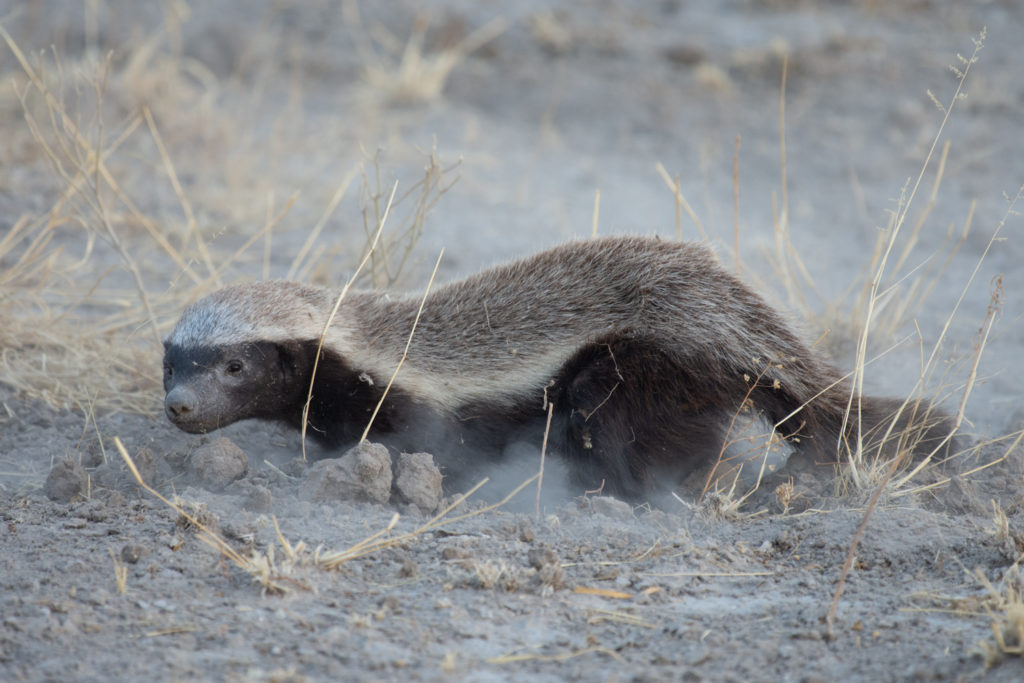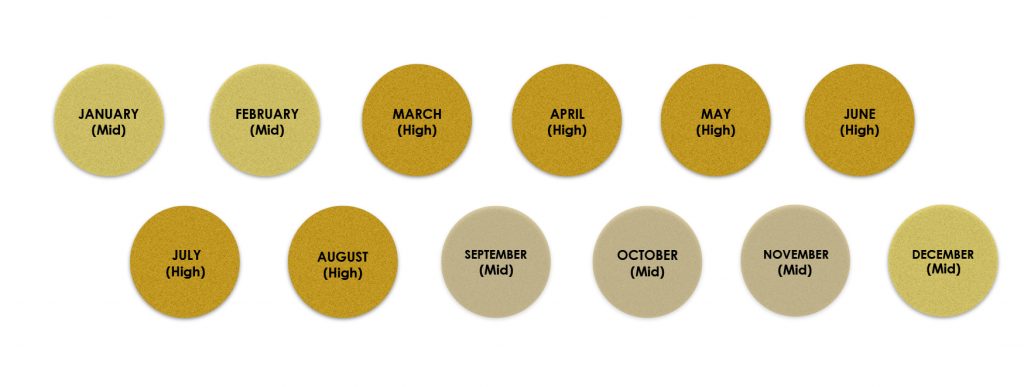DESERT SAFARIS
Central Kalahari:
High Season: May to September
Good Sightings: January to April
Low Season: September to December
The Central Kalahari was made famous by Mark & Delia Owen’s book Cry of The Kalahari published in 1984, after several years of research on the black-maned lions of the Kalahari Game viewing is best here during the dry season, from May to September, when it’s possible to move freely throughout the pans. It’s one of the best parks for spotting cheetah and lions, often seen lying around the waterholes during the dry seasons waiting for their opportunity for an easy meal as antelope such as the eland, springbok, oryx and red hartebeest come down to drink. Other predators include leopard, spotted hyaena and bat-eared foxes, to name a few. The elusive honey badger, brown hyena, striped polecat, aardwolf and Cape fox can also be sighted in this beautiful desert region. In the rainy season, from January to April, exceptionally large antelope herds congregate as there is plenty of vegetation for them to feed but roads can be wet (improving in April). Predators are able to hide in the grasses and therefore there is good hunting activity.
The largest flying bird in the world, the Kori bustard, can be seen throughout the region as well as African red-eyed bulbuls, Namaqua and Burchell sandgrouse, dark chanting goshawk, rock kestrel and tawny eagle are regular sightings.
Experience the traditional way of life and desert survival with the Bushmen of the Kalahari by spending the day with these extraordinary survival masters. Please let us know if you’d like us to arrange this unforgettable experience.
‘The isolation and vastness of the Central Kalahari Game Reserve, with no mobile phone signal and seeing the beauty of the Milky Way at night is what makes this area so special’ Gary Taylor, Semunyeni
Nxai Pan and Makgadikgadi Pans:
Nxai Pan:
Good Sightings: October to May
Peak Season: December to March
Low Season: June to September
Makgadikgadi Pans:
High Season: December to May
Good Sightings: January to December (all year round)
The annual migration of the wildebeest and zebra in the Makgadikgadi and Nxai Pan area, similar to the great migrations in Kenya and Tanzania but on a smaller scale, takes place during the wetter seasons in the year (around February and March), depending on the annual rainfall. Here one can see predators, such as lion, cheetah and leopard waiting for their opportunities to catch the offspring for an easy meal. Big migrating herds of blue wildebeest and Burchell’s zebra are on the move while other herbivores such as oryx, eland, and red hartebeest follow the migration. Predators are also out in their numbers and the rare brown hyena and spotted hyena can both be seen. Lion typically hunt zebra and leopard are fairly common in the riverine forests.
Nxai Pan has permanent pools of water supporting hippos and crocs, and giraffe are frequently sighted here. The pans in the east of the park do not have much animal activity in the dry, winter months, but this is when their stark beauty is best appreciated, particularly the boababs. The Nxai Pan is home to the famous Baines Baobabs, their extraordinary beauty exposed by artist Thomas Baines in 1862. They are estimated to be 6000 years old.
’Sitting around the fire at night under these wild starry skies, hearing the elephants trumpet and knowing there is no fence, gives me the feeling of freedom in Africa’ Gary Taylor, Semunyeni

HIGHLIGHTS

LUXURY CAMPING & ACCOMMODATION


